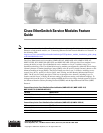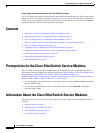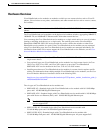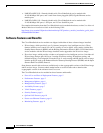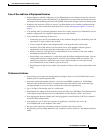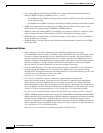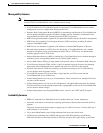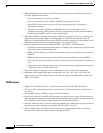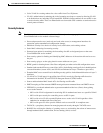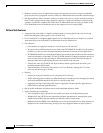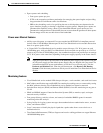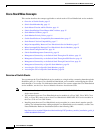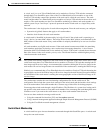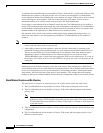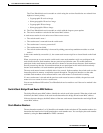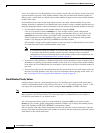
Cisco EtherSwitch Service Modules Feature Guide
Information About the Cisco EtherSwitch Service Modules
4
Cisco IOS Release 12.2(25)SEC
• NME-XD-48ES-2S-P—Extended double-wide Cisco EtherSwitch service module with
48 10/100-Mbps PoE ports, and 2 small form-factor pluggable (SFP) Gigabit Ethernet service
module ports
• NME-XD-24ES-1S-P—Extended double-wide Cisco EtherSwitch service module with
24 10/100-Mbps PoE ports, 1 SFP port, and 2 Cisco StackWise ports
For complete information about the Cisco EtherSwitch service modules hardware, see the Cisco Network
Modules Hardware Installation Guide at the following URL:
http://www.cisco.com/en/US/products/hw/modules/ps2797/products_module_installation_guide_book
09186a00802d2910.html
Software Features and Benefits
The Cisco EtherSwitch service modules are shipped with either of these software images installed:
• IP base image, which provides Layer 2+ features (enterprise-class intelligent services). These
features include access control lists (ACLs), quality of service (QoS), static routing, and the Hot
Standby Router Protocol (HSRP) and the Routing Information Protocol (RIP). Cisco EtherSwitch
service modules with the IP base image installed can be upgraded to the IP services image.
• IP services image, which provides a richer set of enterprise-class intelligent services. It includes all
IP base image features plus full Layer 3 routing (IP unicast routing, IP multicast routing, and
fallback bridging). To distinguish it from the Layer 2+ static routing and RIP, the IP services image
includes protocols such as the Enhanced Interior Gateway Routing Protocol (EIGRP) and the Open
Shortest Path First (OSPF) Protocol.
Some features noted in this section are available only on the cryptographic versions of the IP base image
and IP services image. You must obtain authorization to use this feature and to download the
cryptographic version of the software from Cisco.com.
The Cisco EtherSwitch service module has these features and benefits:
• Ease-of-Use and Ease-of-Deployment Features, page 5
• Performance Features, page 5
• Management Options, page 6
• Manageability Features, page 7
• Availability Features, page 7
• VLAN Features, page 8
• Security Features, page 9
• QoS and CoS Features, page 10
• Power-over-Ethernet Features, page 11
• Monitoring Features, page 11



